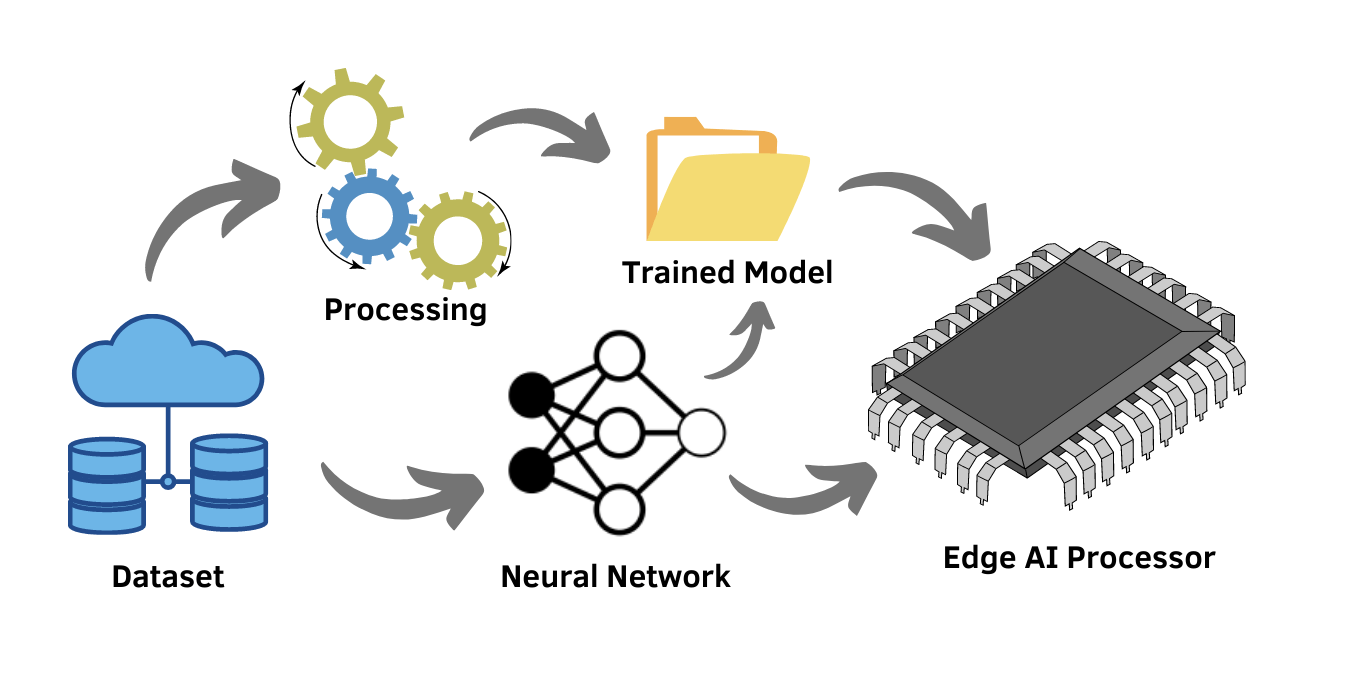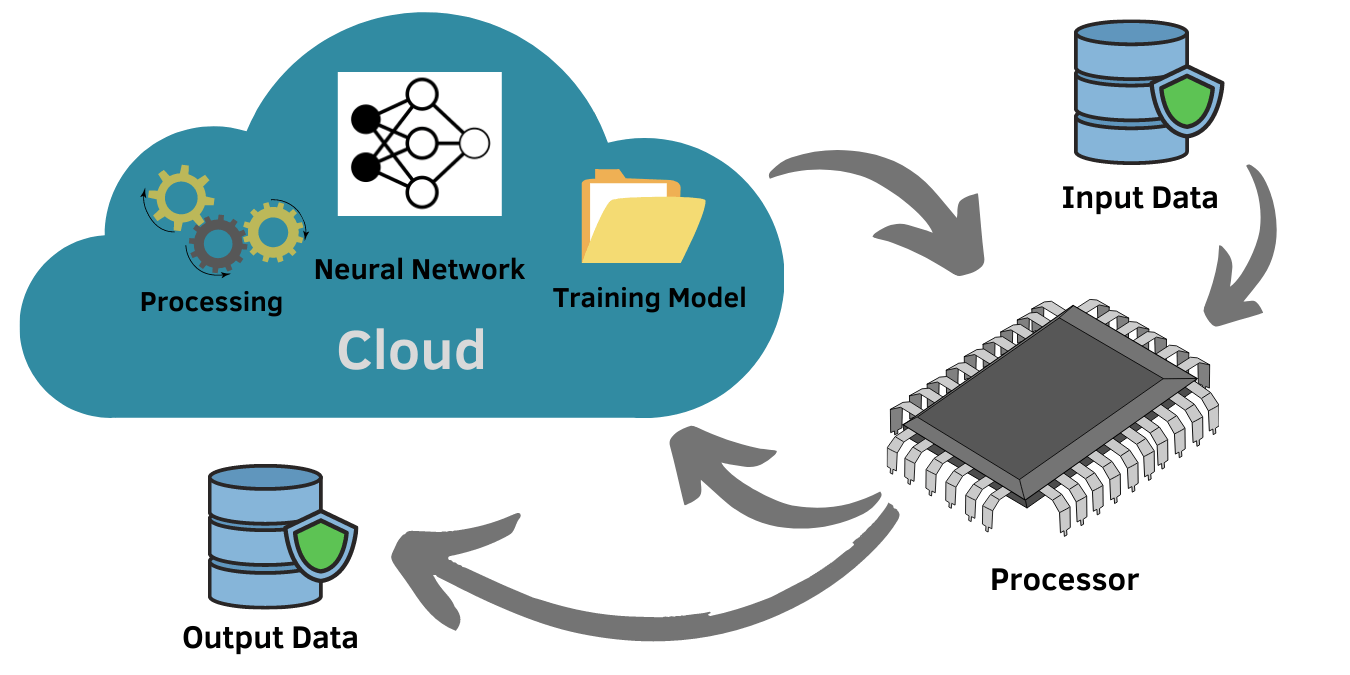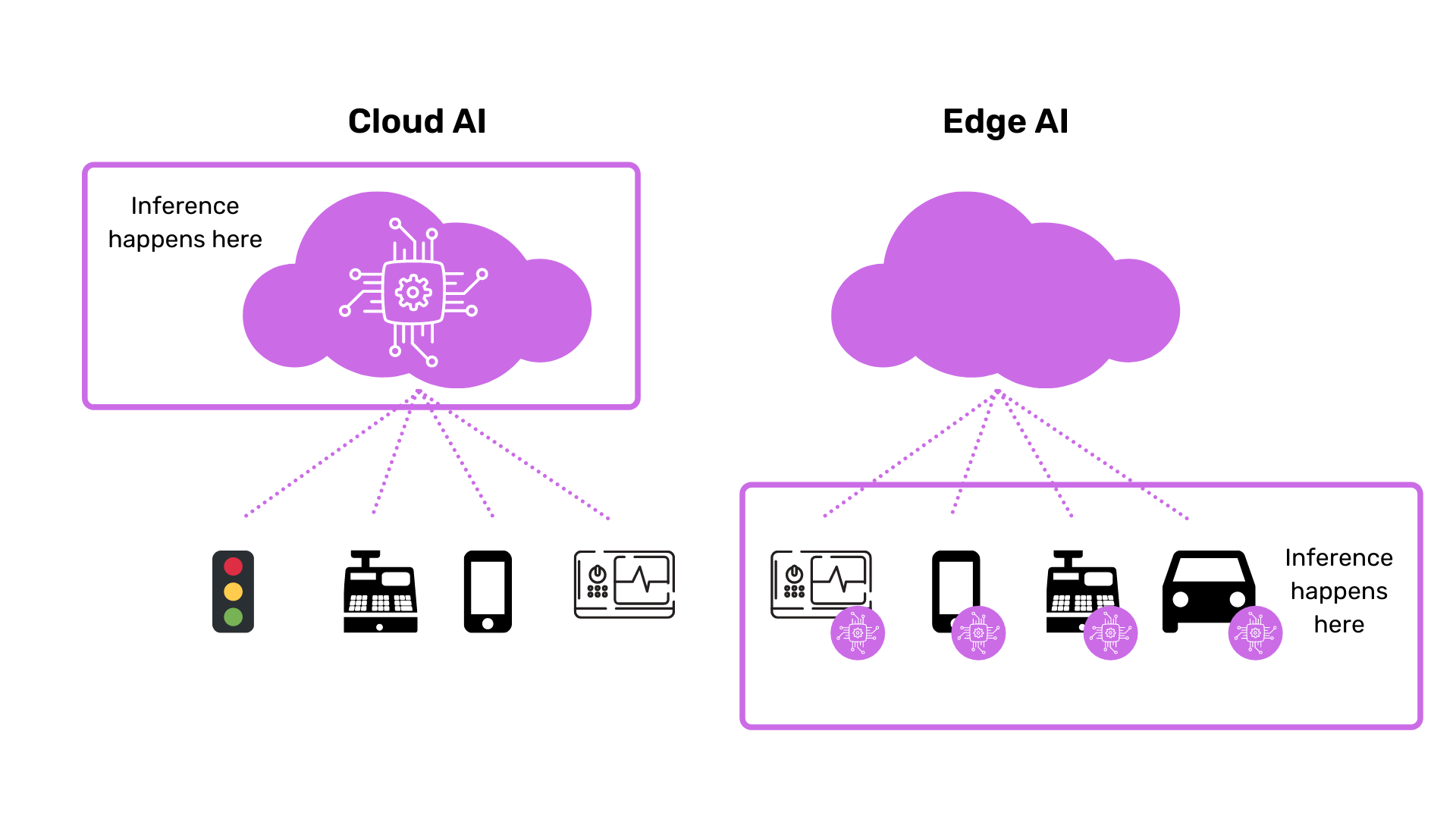
Edge AI and Cloud AI are some of the trending buzzwords in the Artificial Intelligence industry. While AI algorithms are increasingly used in different industries such as Surveillance, E-commerce, Retail to name a few, there is a tremendous demand for making the algorithms scalable for the actual deployment location. That’s where edge computing and cloud computing come into the picture. Let’s have a look at both of them.
What is Edge AI?
Edge AI refers to moving the computation and inference of AI algorithms on the edge devices, which are the physical locations where the algorithm needs to be implemented. Basically, the inference of the algorithm happens on the hardware whereas the training can happen on another device having greater compute capability. These hardware devices often come with accelerating features for boosting the real-time performance of the algorithm. This kind of Edge AI solution benefits in reducing the latency of data transfer and gives substantially improved speed for real-time execution.
Some applications of Edge AI are:

What is Cloud AI?
Cloud AI involves performing computational tasks such as preprocessing, training, and inference on a remote cloud server. Cloud AI is advantageous when there is a huge amount of data involved for preprocessing and training as it comprises of huge compute capability. Solving complex tasks which require more time and do not need immediate delivery of results to the endpoint can be done on cloud servers. However, Cloud AI brings a potential drawback with it of increased latency during transportation of data from server to edge devices which can result in a dramatic reduction of value.
Some applications of Cloud AI are:

The tradeoff between Edge AI and Cloud AI:
Computational Power: The processors on a local edge device will comparatively possess lesser computational power than cloud servers. Hence, when a lot of processing is required that time edge devices will pose their bottleneck.
Bandwidth: As the processing happens locally there is less use of internet because of less frequent data transfers. Therefore, edge AI benefits in saving the internet bandwidth costs.
Latency: Edge AI is particularly useful for applications which require fast real-time inference. This is because the service runs locally on the edge which is closer to the actual endpoint for delivery. On the other hand, dealing with Cloud AI can introduce many issues related to delayed data transfer.
Security: With edge, the privacy and the security of data can be maintained. More transfers of data gives rise to greater chances of losing the integrity of data.
Real-time Processing: For the applications which need processing speed near to real-time, edge AI is critically useful. While utilising cloud servers can take some seconds to process, edge devices can execute the same within milliseconds or less.
How can cloud AI complement edge AI?
Nowadays, edge AI is more prominent than cloud AI because of the benefits it offers to various applications. However, to make an optimum use of both the technologies, cloud AI can be used in tandem with edge AI to boost the performance and efficiency of a product. Let’s consider an example of a self-driving car. In self-driving cars, the decisions need to be made as quick as human actions and near to real time as even the slightest delay can result in disastrous consequences. Hence, prompt actions such as accelerating, breaking, and taking a turn in the car can happen based on the real-time execution from edge processors. Whereas deriving a deeper, longer term insight such as repairs required for the car or accustomisation to different geographical regions can made possible by continuously sending the new data to cloud for detailed analysis. Therefore, because of this combination of cloud and edge it would be possible to fulfil the real-time requirements as well as scale the solution for varied scenarios.

In this blog, we understood what is the difference between edge AI and cloud AI. We also looked at the tradeoffs and their interoperability to achieve optimum performance in real life applications. By that, we can say that edge AI is not overtaking cloud AI but rather complementing it.